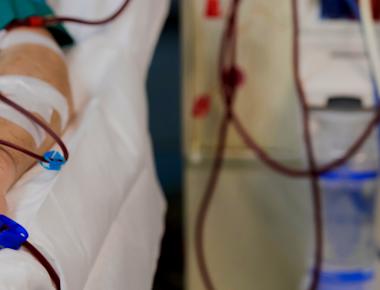
The Effect of Magnesium Sulfate on Cerebral Vasospasm after Aneurysmal Subarachnoid Hemorrhage

Table Of Contents
What is Aneurysmal Subarachnoid Hemorrhage
About 70% of those with aneurysmal subarachnoid hemorrhage (aSAH) experience cerebral vasospasm (narrowing of blood vessels in the brain). It is the major cause of morbidity, mortality, and disability in patients suffering from aSAH.
Aneurysmal subarachnoid hemorrhage refers to bleeding caused by a burst blood vessel in the area between the brain and the tissues covering it. Magnesium sulfate is shown to be safe and, and it reverses cerebral vasospasm. Milrinone is commonly used as treatment for cerebral vasospasm.
Preventing Cerebral Vasospasm with Magnesium as a Treatment
The goal of this study is to assess the effect of preventive magnesium sulfate and milrinone on the occurrence of cerebral vasospasm after aneurysmal subarachnoid hemorrhage.
The Study Method on Patients with Aneurysmal Subarachnoid Hemorrhage and The Use of Magnesium Sulfate
The study included 90 patients in the intensive care unit (ICU) with aSAH and scheduled for surgery. They were classified equally and randomly into two groups and given either magnesium sulfate or milrinone as an infusion for 21 days. After surgery, the cerebral vasospasm was diagnosed.
The Result
The cerebral blood flow velocity decreased significantly in the magnesium group compared to the milrinone group on Days 7, 14, and 21. The occurrence of cerebral vasospasm decreased significantly with magnesium compared to milrinone.

The Glasgow coma scale, which measures the extent of impaired consciousness, greatly improved in the magnesium group compared to the milrinone group through Days 7, 14, and 21, thus decreasing their need for postoperative mechanical ventilation.

The incidence of hypotension (abnormally low blood pressure) was higher with milrinone than magnesium. Therefore, the requirement for dopamine and norepinephrine to increase blood pressure was higher in the milrinone group compared to the magnesium group.


The Conclusion
The incidence of cerebral vasospasm after aneurysmal subarachnoid hemorrhage was significantly lower, and the Glasgow coma scale was significantly better with magnesium when compared to milrinone. Milrinone was associated with hypotension and, thus, a greater need for dopamine and norepinephrine to increase blood pressure than magnesium.
Reference
Related Posts



Quick Links
Legal Stuff




